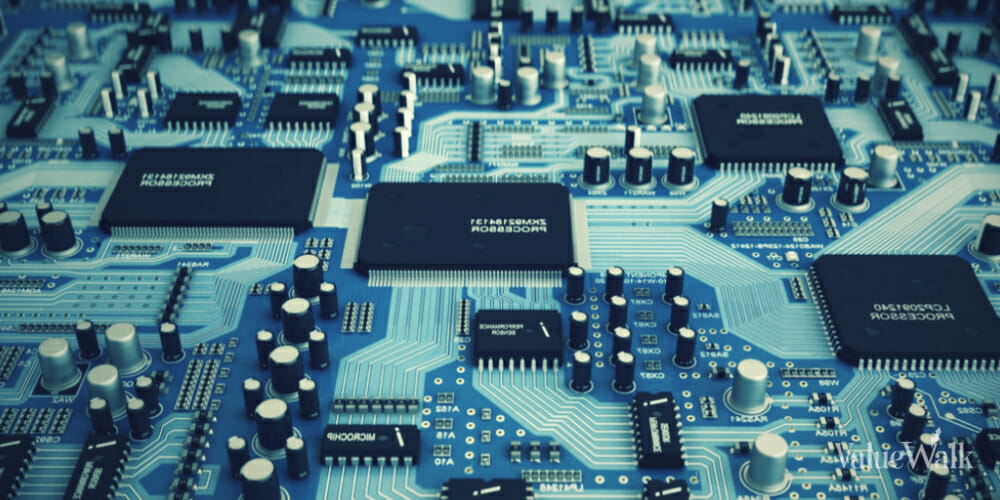Semiconductor stocks have been one of the major drivers of the markets for years in this digital age. However, the past few years have been particularly strong with the emergence of artificial intelligence (AI) and the high demand for chips that can handle more complex AI-related tasks.
In January, global semiconductor sales totaled $47.6 billion, jumping 12.5% year over year but dropping 2.1% from December. The market seemed to take a glass-half-empty view of that news as most semiconductor stocks dipped after the Semiconductor Industry Association announced the numbers Monday afternoon.
There was more pessimism toward semiconductor stocks after two major chipmakers, Broadcom (NASDAQ:AVGO) and Marvell Technology (NASDAQ:MRVL), posted earnings on Thursday afternoon and saw their share prices drop Friday morning. Is this reflective of a larger trend in the industry, or is it a more isolated short-term reaction? Let’s take a closer look.
While both semiconductor companies met or exceeded earnings and revenue estimates in the most recent quarter, their stock prices both plunged on Friday. Marvell was down by about 9% to around $77 per share as of 1 p.m. Eastern, while Broadcom was off more than 6% to $1,317 per share.
The primary negative catalyst for both firms appeared to be their outlooks. For example, Marvell is targeting net revenue of around $1.15 billion in the first fiscal quarter. That is well below the $1.426 billion in net revenue it recorded in the fourth quarter and less than analysts had anticipated.
Further, Marvell’s gross margin is expected to be in a range between 44.5% and 47.2%, compared to 46.6% in Q4, while adjusted earnings is estimated at 23 cents per share, which is significantly below the 40-cent-per-share consensus estimate.
The outlook for Broadcom also disappointed investors, but the reasons why are not as clear. The company reiterated its revenue outlook for fiscal 2024 at $50 billion, which would be about 40% higher than the $35.8 billion in revenue it generated in the last fiscal year.
The major drivers are expected to be Broadcom’s AI chips, which are projected to account for $10 billion of the $50 billion in revenue, and its recent acquisition of cloud-computing firm VMware. In the fiscal first quarter alone, Broadcom generated $2.3 billion in revenue from its AI chips — four times more than the same quarter a year ago.
The chipmaker also maintained its guidance for adjusted EBITDA of around $30 billion, up from $23.2 billion in the previous fiscal year. That figures to be roughly 60% of its total revenue, down from 65% in the last fiscal year.
“We are pleased to have two strong drivers of revenue growth for Broadcom in the first quarter and fiscal year 2024,” said Hock Tan, president and CEO of Broadcom, in the earnings release. “First, our acquisition of VMware is accelerating revenue growth in our infrastructure software segment, as customers deploy VMware Cloud Foundation. Second, strong demand for our networking products in AI data centers, as well as custom AI accelerators from hyperscalers, are driving growth in our semiconductor segment.”
Selloff not necessarily a bad thing
The market seemed to overreact today to Broadcom in particular. The results and outlook for Marvell are a little more worrying, as its revenue growth is coming entirely from its AI segment, while its other businesses have struggled to generate revenue gains.
However, the selloff may not be an entirely bad thing, particularly for Broadcom, which looks like the better stock of the two. That’s because Broadcom has gotten more expensive, with its share price rising 104% in 2023 and another 21% this year, including Friday’s drop. The price-to-earnings ratio has climbed to 42 from about 21 a year ago, while the forward P/E has jumped to 30 from 18 in November.
Broadcom stock was bound to cool off a bit, so this might be a reaction to that rising valuation. The company still has great earnings power, so it is certainly one to hold. For those looking to buy, it might be a time to wait and see a bit to gauge where things will settle.
Disclaimer: All investments involve risk. In no way should this article be taken as investment advice or constitute responsibility for investment gains or losses. The information in this report should not be relied upon for investment decisions. All investors must conduct their own due diligence and consult their own investment advisors in making trading decisions.












